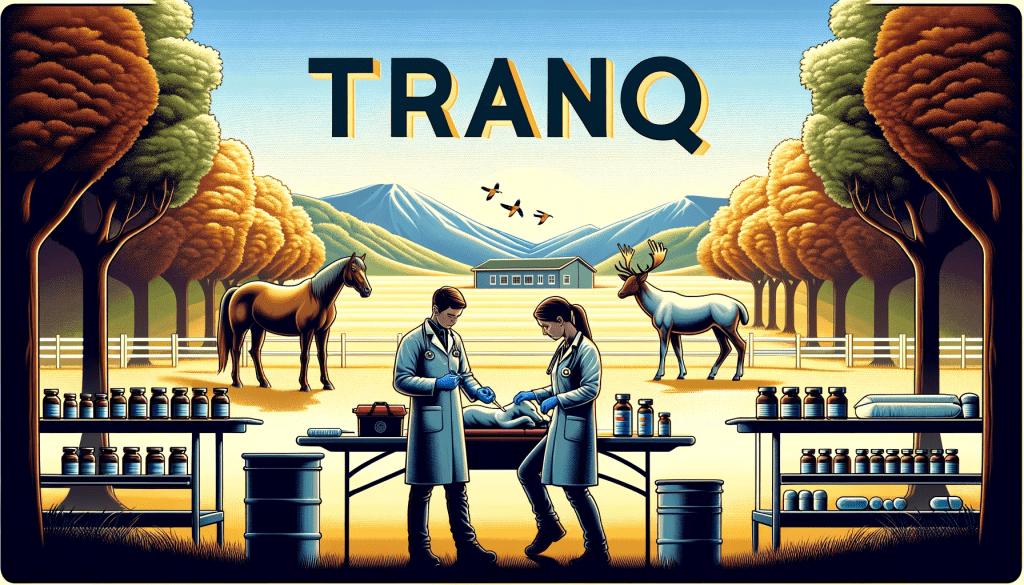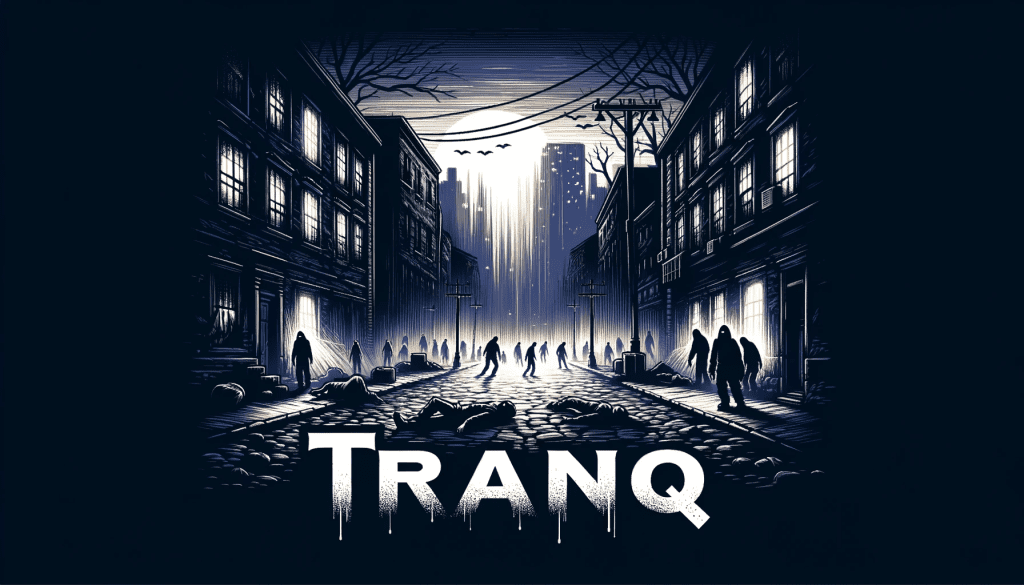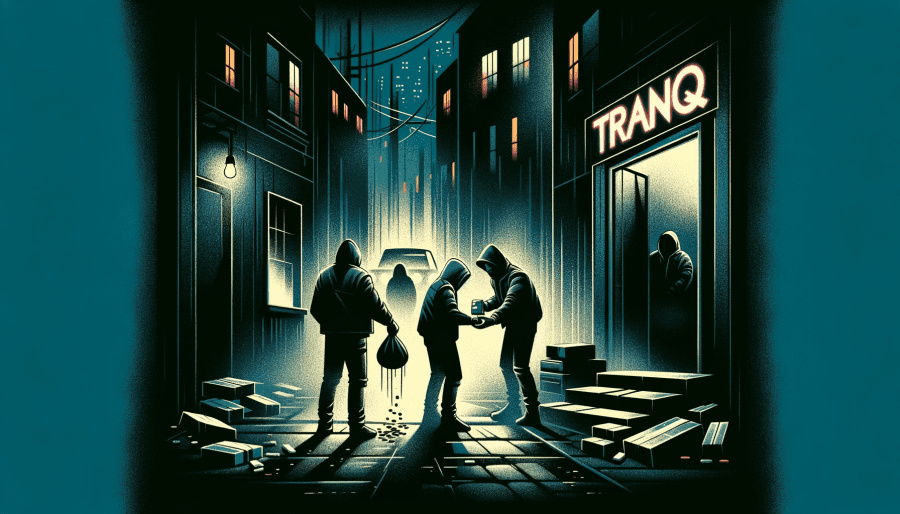In this comprehensive guide, we explore the drug known by some as Tranq (Xylazine) which is becoming increasingly prevalent in the illegal drug supply of the United States.
This article aims to shed light on Tranq, discussing its uses, effects, and the significant dangers it poses, especially when it appears in combination with other substances such as fentanyl. It will also discuss why Xylazine is known as “the Zombie Drug.”
If you are or someone you love is struggling with drug or alcohol addiction, The Blackberry Center can help. Start recovery now by calling 813-908-4199.
What is Tranq (Xylazine)?

Originally crafted for veterinary purposes, Xylazine, sometimes referred to as Tranq, has alarmingly surfaced in the United States’ black market for narcotics.
It’s not authorized for human use and is typically employed in animal healthcare for tranquilizing purposes, including sedation, anesthesia, muscle relaxation, and pain alleviation, particularly in larger species like horses and deer. Its anesthetic properties are often enhanced through combination with drugs like ketamine in veterinary contexts.
The presence of Tranq in illegal narcotics is a major public health concern, chiefly due to the profound health dangers it presents, especially when combined with strong opioids such as fentanyl. In response to this growing issue, the Biden Administration announced a National Response Plan in July 2023.
Tranq’s Chemical and Pharmacological Characteristics
Xylazine belongs to the alpha-2 adrenergic agonist category, stimulating specific brain and spinal cord receptors, leading to sedation and muscle relaxation. While Tranq induces sedation, muscle relaxation, and reduced pain and blood pressure in animals, these effects are dangerously heightened in humans, especially when mixed with depressants affecting the central nervous system.
How to Pronounce Xylazine
Pronouncing pharmaceutical terms can be challenging. The correct pronunciation of Xylazine is “zy-lah-zeen.”
Tranq’s Role and Utilization
Tranq’s legitimate use is predominantly in the veterinary field, but it has unfortunately been misused by humans. This dual-use scenario contrasts its beneficial applications in veterinary care with its hazardous and unauthorized human consumption.
Tranq in Veterinary Medicine
In veterinary settings, Tranq is a key medication, primarily used for its sedating and anesthetic effects. Its quick action and short-duration effects are particularly advantageous for pre-surgical preparation in animals. Its muscle-relaxant qualities are essential in a variety of veterinary procedures.
Tranq’s Illicit Use in Humans
Tranq has recently become a common adulterant in the illicit drug market, particularly as an additive in opioids like heroin and fentanyl. This worrying trend raises significant public health concerns due to potential severe health consequences.
The Contrast in Tranq’s Effects: Veterinary vs. Illicit Human Use
In veterinary environments, Tranq is invaluable for animal care, providing both sedation and pain relief. Conversely, its effects are greatly intensified when misused by humans, leading to serious health risks such as intense sedation, respiratory depression, and unpredictable reactions, especially when mixed with other drugs.
Why is Tranq Referred to as the “Zombie Drug”?

In addition to “Tranq,” Xylazine is often dubbed the “Zombie Drug”, particularly when it’s combined with opioids like fentanyl. This label stems from its ability to cause deep sedation, leading to a zombie-like state in users. The drug’s association with severe skin ulcers and infections further cements this nickname.
The Legal Status of Tranq
Currently, Xylazine is not classified as a controlled substance in the U.S. Nonetheless, its misuse and combination with controlled substances such as opioids have escalated the level of concern among health officials and law enforcement agencies.
Is Tranq Ketamine?
While both Xylazine and ketamine are utilized for sedation and anesthesia, they differ in drug classification and action mechanisms. Ketamine is used in both human and animal healthcare, whereas Tranq’s use is restricted to veterinary practices.
Is Tranq a Benzodiazepine
Xylazine does not fall under the benzodiazepine category. It is an alpha-2 adrenergic agonist, unlike benzodiazepines that work by enhancing GABA neurotransmitter effects. An example of a benzodiazepine is Valium.
What Does Tranq Look Like?
In veterinary settings, Xylazine typically appears as a clear, colorless liquid. Its appearance can greatly vary in the illicit market, where it’s often mixed with other substances, complicating its identification.
How Long Does Tranq Last?
For animals, Xylazine effects can last a few hours, depending on the dose and individual response. In humans, these effects are more unpredictable and are further complicated when Tranq is combined with other drugs.
Tranq in the US Illicit Drug Supply: A Growing Concern
The increasing presence of Xylazine in the U.S. illegal drug market has become a significant public health issue. Its use with opioids like fentanyl has led to a rise in overdoses and other serious health issues.
The Opioid Crisis and Tranq
The combination of Xylazine with opioids like fentanyl represents an escalating danger, significantly increasing the likelihood of overdoses and fatalities. The comprehensive National Response Plan released by the White House in July 2023 emphasizes the need for enhanced public awareness, harm reduction strategies, and intensified law enforcement efforts.
Geographic Proliferation and Statistical Evidence
The detection of Xylazine in drug samples has increased across the U.S., with notable rises in southern regions. Studies in several American cities have shown a significant uptick in Tranq’s involvement in overdose deaths over recent years. In areas like Maryland and Philadelphia, a high incidence of Tranq in opioid-containing drug samples and overdose deaths has been documented.
Health Implications and Risks Associated with Tranq
Tranq Wounds and Dermatological Concerns
A unique and concerning effect of Xylazine use in humans is the development of skin ulcers and wounds, likely due to its vasoconstrictive properties, which restrict blood flow and cause tissue damage.
Tranq Withdrawal
Withdrawal symptoms from Xylazine are often severe and require medical attention. These symptoms can include increased agitation, high blood pressure, and shaking.
Tranq Antidote
There is no dedicated antidote available for Xylazine overdose, highlighting the risks associated with its use, especially when combined with other substances.
Conclusion: The Imperative for Increased Awareness and Proactive Measures
The emergence of Xylazine in the U.S. illegal drug market is a concerning development with extensive public health implications. Elevating awareness about the risks posed by Tranq, particularly when used with opioids, is crucial to prevent further harm and fatalities. This guide aims to provide essential information about Tranq, its effects, and the risks linked to its misuse in the illegal drug market. The objective is to foster greater understanding and support initiatives to combat the opioid crisis, now exacerbated by the inclusion of substances like Tranq.
If you are or someone you love is struggling with drug or alcohol addiction, The Blackberry Center can help. Start recovery now by calling 813-908-4199.

